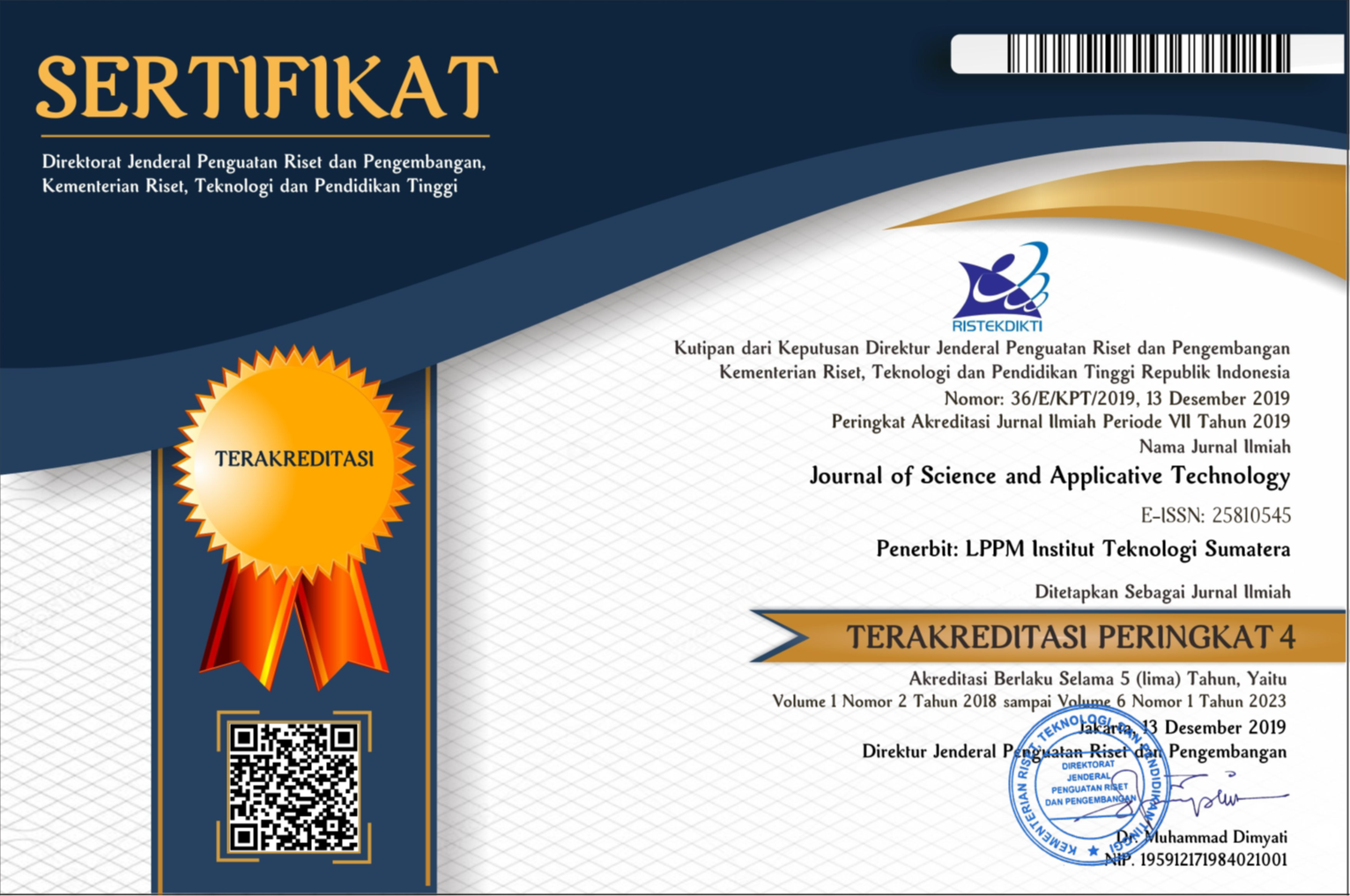Semi-Empirical Estimation of Velocity Profile for Shallow Gravel Bed Channel
Abstract
The dependence of flow velocity distribution near the bed on the roughness geometry has led to various approaches for estimating the velocity. Themodels proposed bypreviousstudies aremostlybased on segmented velocityprofiles(e.g., a linear distribution within theinterfacial sublayer and logarithmic distributions above the interfacial sublayer). By increasing number of segments, the possibility of errors in the parameters, as well as constants, are likely to rise. This study assessed the applicability of a hyperbolic tangent function velocity model to estimate double-averaged velocity profile for shallow flow over a rough gravel bed as a single model concept, especially for the area within roughness layer. Velocity profiles over gravel beds with different arrangements and roughness densities from previously published studies using laboratory measurements were used to validate this model. The behaviours of related constants for this model in response to changes in the flow depth and roughness geometry were investigated, and limitations on it application were evaluated. It was found that the constants required to apply hyperbolic tangent function are affected by roughness geometry function and relative submergence. Through this study also observed that HTF is reliable to describe the velocity profile for about twice of geometric roughness height.
Downloads
References
[2]. D. Powell, "Flow resistance in gravel-bed rivers: Progress in research", Earth-Science Reviews, vol. 136, pp. 301-338, 2014.
[3]. T. Buffin-Bélanger, S. Rice, I. Reid and J. Lancaster, "Spatial heterogeneity of near-bed hydraulics above a patch of river gravel", Water Resources Research, vol. 42, no. 4, 2006.
[4]. M. Franca, R. Ferreira and U. Lemmin, "Parameterization of the logarithmic layer of double-averaged streamwise velocity profiles in gravel-bed river flows", Advances in Water Resources, vol. 31, no. 6, pp. 915-925, 2008.
[5]. S. Kara, T. Stoesser and T. Sturm, "Turbulence statistics in compound channels with deep and shallow overbank flows", Journal of Hydraulic Research, vol. 50, no. 5, pp. 482-493, 2012.
[6]. S. Mohajeri, S. Grizzi, M. Righetti, G. Romano and V. Nikora, "The structure of gravel‐bed flow with intermediate submergence: A laboratory study", Water Resources Research, vol. 51, no. 11, pp. 9232-9255, 2015.
[7]. V. Nikora et al., "Double-Averaging Concept for Rough-Bed Open-Channel and Overland Flows: Applications", Journal of Hydraulic Engineering, vol. 133, no. 8, pp. 884-895, 2007.
[8]. Luchini, "Universality of the Turbulent Velocity Profile", Physical Review Letters, vol. 118, no. 22, 2017.
[9]. J. Bathurst, D. Simons and R. Li, "Resistance Equation for Large-Scale Roughness", Journal of the Hydraulics Division, vol. 107, no. 12, pp. 1593-1613, 1981.
[10]. M. Rouzes, F. Moulin, E. Florens and O. Eiff, "Low relative-submergence effects in a rough-bed open-channel flow", Journal of Hydraulic Research, vol. 57, no. 2, pp. 139-166, 2018.
[11]. V. Nikora, D. Goring, I. McEwan and G. Griffiths, "Spatially Averaged Open-Channel Flow over Rough Bed", Journal of Hydraulic Engineering, vol. 127, no. 2, pp. 123-133, 2001.
[12]. R. Gaudio, A. Miglio and S. Dey, "Non-universality of von Kármán's κ in fluvial streams", Journal of Hydraulic Research, vol. 48, no. 5, pp. 658-663, 2010.
[13]. K. Koll, “Parameterisation of the vertical velocity profile in the wall region over rough surfaces”, in Proceedings of the International Conference on Fluvial Hydraulics, River Flow 2006, pp. 163-171, 2006.
[14]. X. Chen, M. Hassan, C. An and X. Fu, "Rough Correlations: Meta‐Analysis of Roughness Measures in Gravel Bed Rivers", Water Resources Research, vol. 56, no. 8, 2020.
[15]. V. Nikora, K. Koll, S. McLean, A. Dittrich, and J. Aberle, “Zero-plane displacement for rough-bed open-channel flows”, Proceeding of International Conference Fluvial Hydraulics, Louvain-la-Neuve, Belgium, vol. 1, pp. 83–92, 2002b.
[16]. G. Katul, P. Wiberg, J. Albertson and G. Hornberger, "A mixing layer theory for flow resistance in shallow streams", Water Resources Research, vol. 38, no. 11, pp. 32-1-32-8, 2002.
[17]. S. Dey and R. Das, "Gravel-Bed Hydrodynamics: Double-Averaging Approach", Journal of Hydraulic Engineering, vol. 138, no. 8, pp. 707-725, 2012.
[18]. V. Ferro and P. Porto, "Assessing theoretical flow velocity profile and resistance in gravel bed rivers by field measurements", Journal of Agricultural Engineering, vol. 49, no. 4, pp. 220-227, 2018.
[19]. A. Adak, "Turbulent Flow Characterization over the Gravel Bed", IOP Conference Series: Materials Science and Engineering, vol. 377, p. 012090, 2018.
[20]. M. Luo, X. Wang, X. Yan and E. Huang, "Applying the mixing layer analogy for flow resistance evaluation in gravel-bed streams", Journal of Hydrology, vol. 589, p. 125119, 2020.
[21]. M. Lamb, F. Brun and B. Fuller, "Hydrodynamics of steep streams with planar coarse‐grained beds: Turbulence, flow resistance, and implications for sediment transport", Water Resources Research, vol. 53, no. 3, pp. 2240-2263, 2017.
[22]. R. Ferguson, "Flow resistance equations for gravel- and boulder-bed streams", Water Resources Research, vol. 43, no. 5, 2007.
[23]. D. Rickenmann and A. Recking, "Evaluation of flow resistance in gravel-bed rivers through a large field data set", Water Resources Research, vol. 47, no. 7, 2011.
[24]. A. Michalke, "On the inviscid instability of the hyperbolictangent velocity profile", Journal of Fluid Mechanics, vol. 19, no. 4, pp. 543-556, 1964.
[25]. M. Raupach, J. Finnigan and Y. Brunei, "Coherent eddies and turbulence in vegetation canopies: The mixing-layer analogy", Boundary-Layer Meteorology, vol. 78, no. 3-4, pp. 351-382, 1996.
[26]. G. Katul, "An Investigation of Higher-Order Closure Models for a Forested Canopy", Boundary-Layer Meteorology, vol. 89, no. 1, pp. 47-74, 1998.
[27]. H. Jobson, "Evaporation Into the Atmosphere: Theory, History, and Applications", Eos, Transactions American Geophysical Union, vol. 63, no. 51, p. 1223, 1982.
[28]. P. Wiberg and J. Smith, "Velocity distribution and bed roughness in high-gradient streams", Water Resources Research, vol. 27, no. 5, pp. 825-838, 1991.
[29]. D. Poggi, A. Porporato, L. Ridolfi, J. Albertson and G. Katul, "The Effect of Vegetation Density on Canopy Sub-Layer Turbulence", Boundary-Layer Meteorology, vol. 111, no. 3, pp. 565-587, 2004.
[30]. D. Pokrajac, J. J. Finnigan, C. Manes, I. Mcewan, and V. Nikora, “On the definition of the shear velocity in rough bed open channel flows”, River Flow 2006, 2006.
[31]. L. Ferreira, “Impact of Sediment Overfeeding in Gravel-Bedded River’s Salmonid Habitats”, (MSc thesis), Instituto Superior Técnico, TU Lisbon, 2008.
[32]. S. Habib, N. Tanaka and Y. Yoshizawa, "Open Channel Turbulence Characteristics in a Roughness Layer for Small Water Depth Relative to Roughness Elements Height", Journal of Japan Society of Civil Engineers, Ser. B1 (Hydraulic Engineering), vol. 72, no. 4, pp. I_511-I_516, 2016.
[33]. R. Yanda, M. Harada and I. Tamagawa, "The Effects of Sediment Supply on Hydraulic Characteristics of Flow Over The Imbricated Cobbles", Journal of Japan Society of Civil Engineers, Ser. B1 (Hydraulic Engineering), vol. 72, no. 4, pp. I_613-I_618, 2016.
[34]. W. F. COON, "Estimation of Roughness Coefficients for Natural Stream Channels with Vegetated Banks", Pubs.usgs.gov, 2022.
[35]. P. Kamann, R. Ritzi, D. Dominic and C. Conrad, "Porosity and Permeability in Sediment Mixtures", Ground Water, vol. 45, no. 4, pp. 429-438, 2007.
[36]. H. Chan, W. Huang, J. Leu and C. Lai, "Macroscopic modeling of turbulent flow over a porous medium", International Journal of Heat and Fluid Flow, vol. 28, no. 5, pp. 1157-1166, 2007.
[37]. I. Nezu and M. Sanjou, "Turburence structure and coherent motion in vegetated canopy open-channel flows", Journal of Hydro-environment Research, vol. 2, no. 2, pp. 62-90, 2008.
[38]. M. Harada, R. Yanda, O. Yukio, K. Yuichi, “Swimming fish habitat evaluation concept focusing on flow characteristics around the roughness layer in streams”, in Proceedings of the 37th IAHR World Congress, Kuala Lumpur, Malaysia, pp. 1-6, 2017
Copyright (c) 2022 Journal of Science and Applicative Technology

This work is licensed under a Creative Commons Attribution-NonCommercial 4.0 International License.
All the content on Journal of Science and Applicative Technology (JSAT) may be used under the terms of the Creative Commons Attribution-NonCommercial 4.0 International License.
You are free to:
- Share - copy and redistribute the material in any medium or format
- Adapt - remix, transform, and build upon the material
Under the following terms:
- Attribution - You must give appropriate credit, provide a link to the license, and indicate if changes were made. You may do so in any reasonable manner, but not in any way that suggests the licensor endorses you or your use.
- NonCommercial - You may not use the material for commercial purposes.
- No additional restrictions - You may not apply legal terms or technological measures that legally restrict others from doing anything the license permits.





















